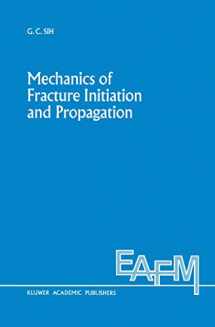
Mechanics of Fracture Initiation and Propagation: Surface and volume energy density applied as failure criterion (Engineering Applications of Fracture Mechanics, 11)
Book details
Summary
Description
The assessment of crack initiation and/or propagation has been the subject of many past discussions on fracture mechanics. Depending on how the chosen failure criterion is combined with the solution of a particular theory of continuum mechanics, the outcome could vary over a wide range. Mod elling of the material damage process could be elusive if the scale level of observation is left undefined. The specification of physical dimension alone is not sufficient because time and temperature also play an intimate role. It is only when the latter two variables are fixed that failure predictions can be simplified. The sudden fracture of material with a pre-existing crack is a case in point. Barring changes in the local temperature,* the energy released to create a unit surface area of an existing crack can be obtained by considering the change in elastic energy of the system before and after crack extension. Such a quantity has been referred to as the critical energy release rate, G e, or stress intensity factor, K Ie. Other parameters, such as the crack opening displacement (COD), path-independent J-integral, etc. , have been proposed; their relation to the fracture process is also based on the energy release concept. These one-parameter approaches, however, are unable simultaneously to account for the failure process of crack initiation, propagation and onset of rapid fracture. A review on the use of G, K I, COD, J, etc. , has been made by Sih [1,2].


We would LOVE it if you could help us and other readers by reviewing the book
Book review



